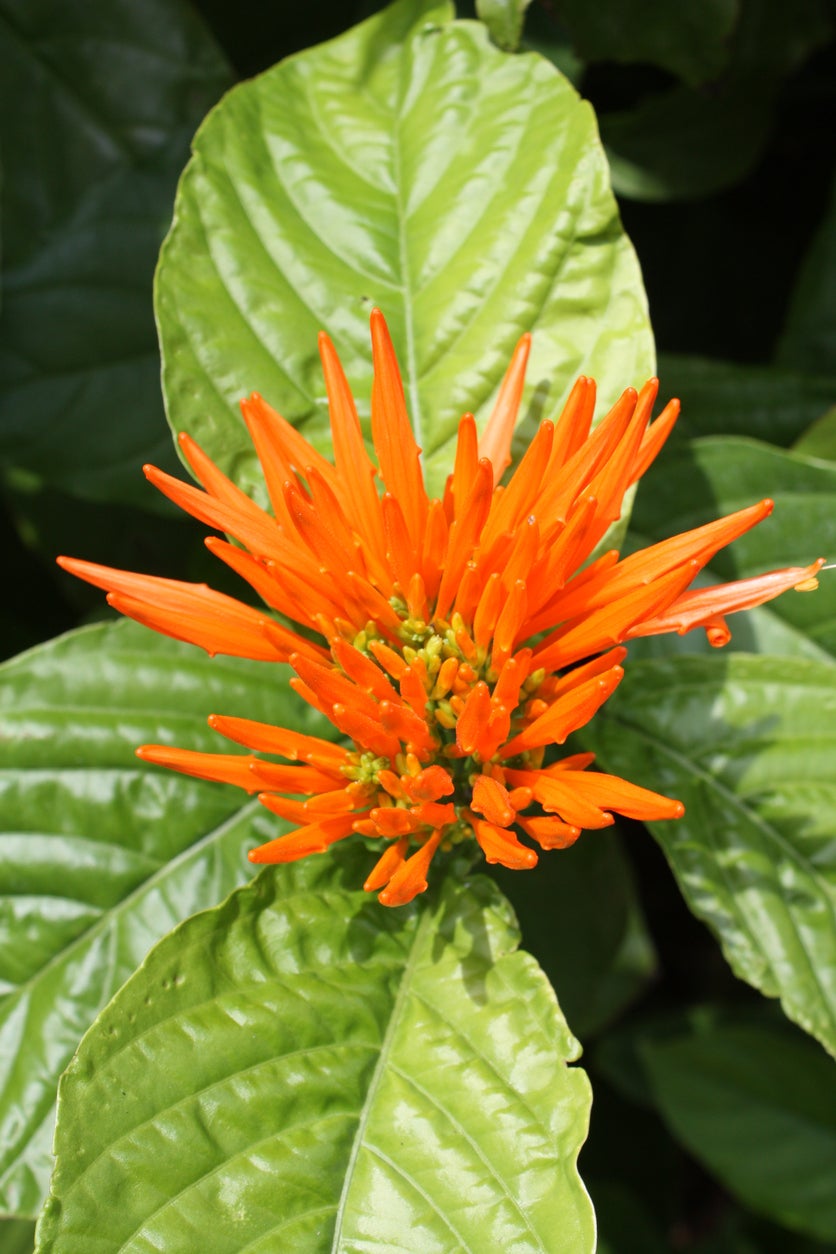Mexican Honeysuckle Care: How To Grow A Mexican Honeysuckle Bush


The addition of brightly colored flowers and foliage to flower beds and garden landscapes is of great importance to many gardeners. Specifically designed plantings made to attract pollinators are not only beneficial to wildlife, but beautiful to look at as well. Flower gardens filled with fluorescent orange and red-flowering plants are a welcome sight to hummingbirds and butterflies alike. One such vibrant plant, Mexican honeysuckle bush (Justicia spicigera), is a popular choice made by home gardeners for this reason.
Mexican Honeysuckle in Gardens
Though not related to other “honeysuckle” plants, it is quite easy to see how the visual similarities among Mexican honeysuckle might explain its namesake. Boasting beautiful orange to reddish flowers, Mexican honeysuckle bush will thrive in gardens located in USDA growing zone 9-11. While the plant may behave as a perennial in some climates, warmer regions will see growth patterns similar to that of evergreen shrubs. Unfortunately, for those without frost free climates, the plants will not survive frost or cold temperatures. At maturity, the shrubs may reach average sizes of 4-6 feet. (1-2 m.), making these plants ideal for use in landscapes in hot, drought-prone locations where shade cast by their presence is a blessing.
Mexican Honeysuckle Care
As evidenced by its tolerance to a wide variety of soil and growing conditions, Mexican honeysuckle plants are an excellent choice for carefree wildlife landscapes. When planting, choose a location that receives direct sunlight, though the plants will tolerate some shade. For best results, water evenly and consistently throughout the season, as a means to promote prolonged bloom time. Due to its ease of care, many growers may be left to wonder, ‘Is Mexican honeysuckle invasive?’ This answer may vary greatly depending upon where you live, as there has been evidence that the plant may become invasive in certain conditions. To specifically answer that question, it is important that gardeners first contact their local agricultural extension office. Local agriculture agents can provide detailed and specific information regarding plant culture where you live. Proper research and attention to detail is an important step to preserving native landscapes and habitats.
Sign up for the Gardening Know How newsletter today and receive a free copy of our e-book "How to Grow Delicious Tomatoes".

Tonya Barnett has been gardening for 13 years. Flowers are her passion. She has transformed her backyard into a cut flower garden, which she regularly chronicles on her YouTube channel http://www.youtube.com/@tonyawiththeflowers.